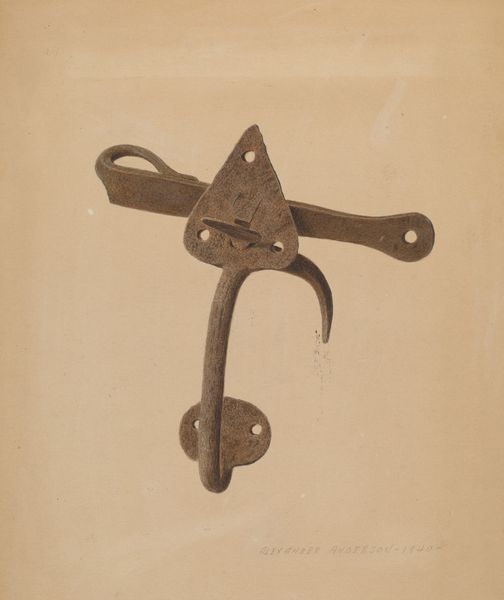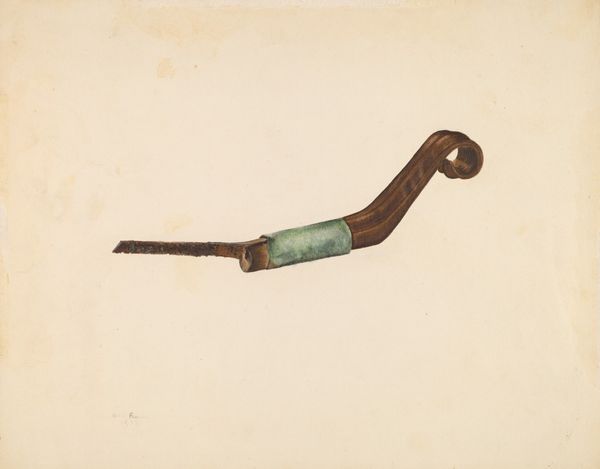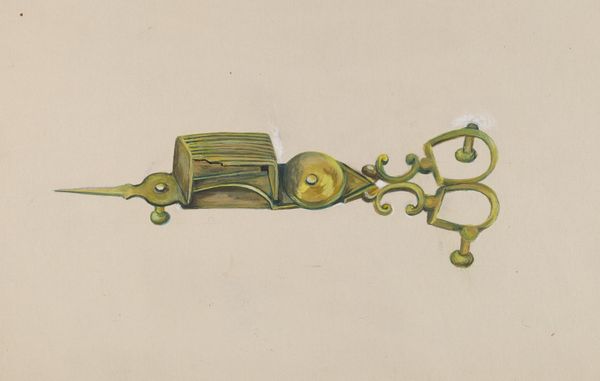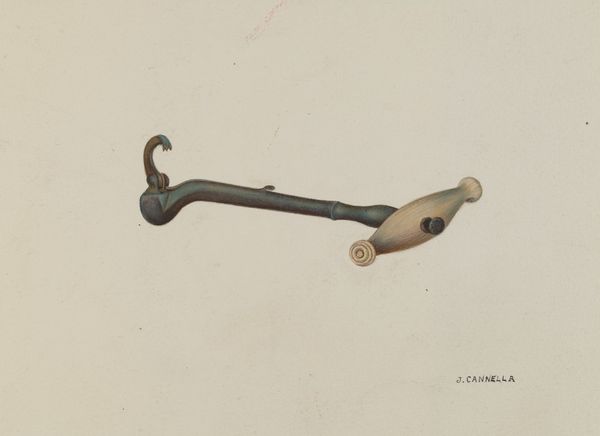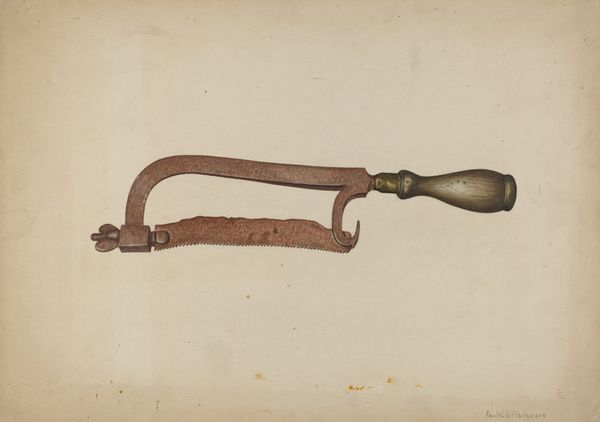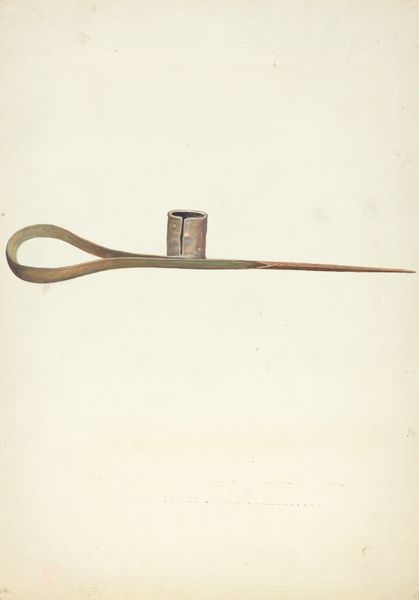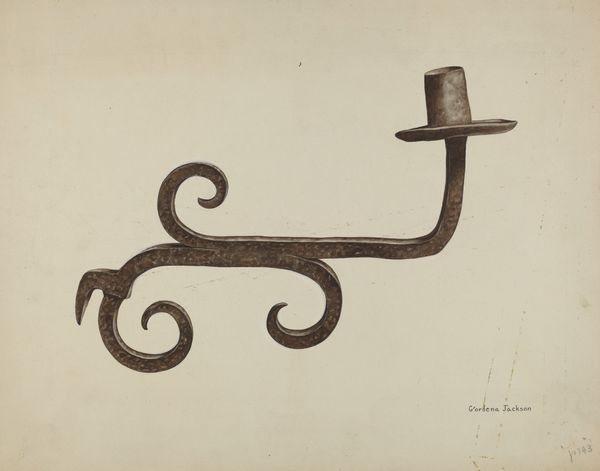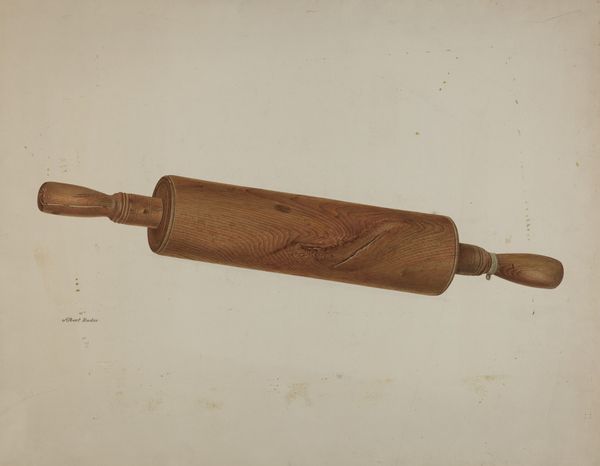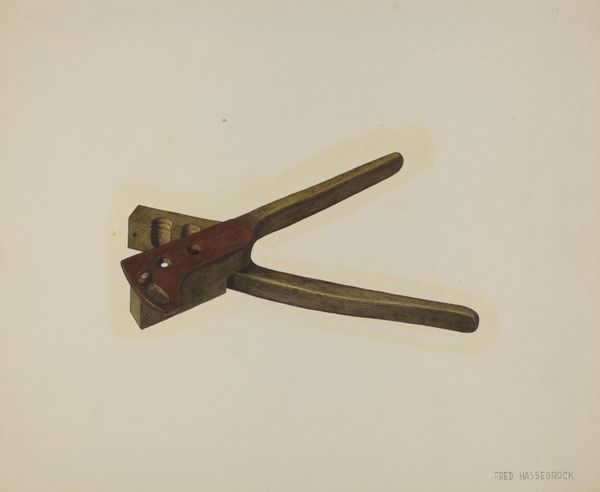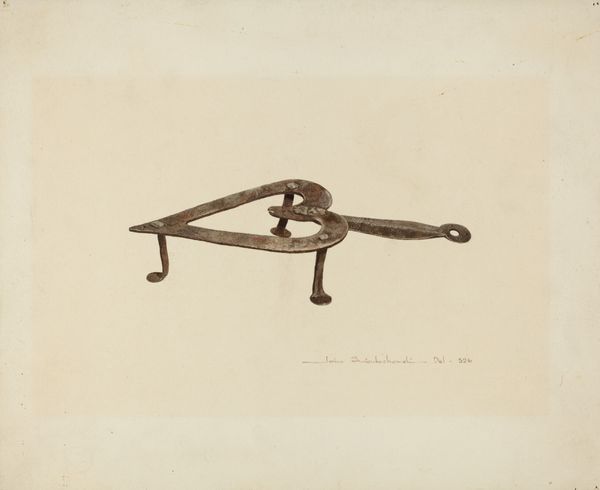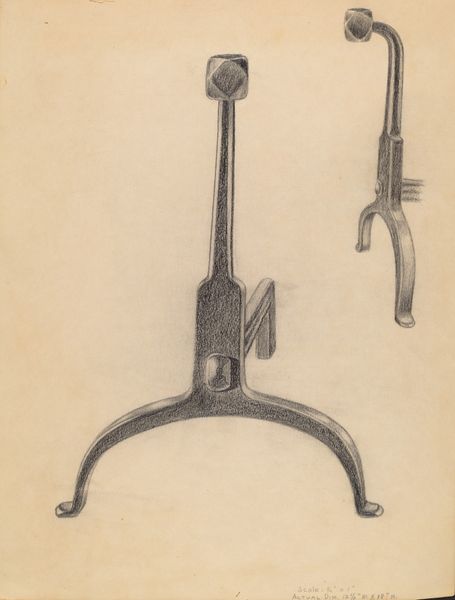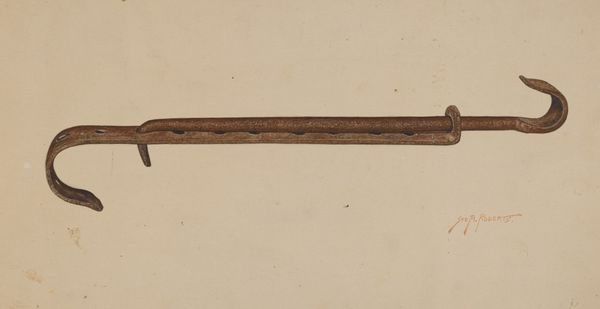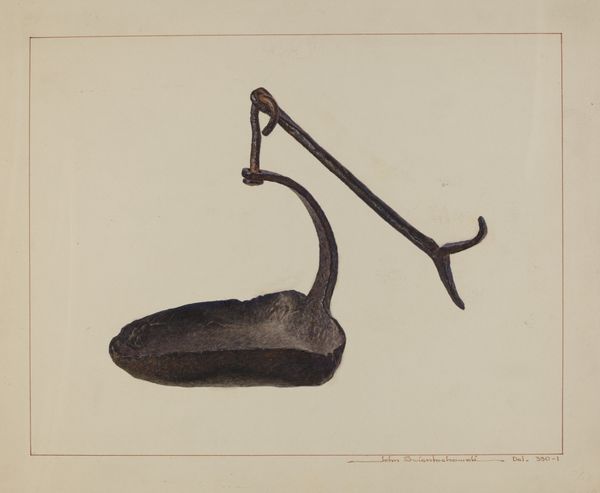
drawing, watercolor
#
drawing
#
caricature
#
watercolor
#
watercolour illustration
#
realism
Dimensions: overall: 23 x 27.9 cm (9 1/16 x 11 in.) Original IAD Object: 6 1/2" long; 2 1/2" wide
Copyright: National Gallery of Art: CC0 1.0
Curator: What a peculiar drawing! My first thought is—that implement looks incredibly fussy. Editor: And yet beautiful in its complexity! This is a watercolor and drawing on paper entitled *Wick Trimmer*, created around 1936 by Samuel O. Klein. Immediately, I find the brassy coloring quite warm. Curator: Brassiness indeed... it speaks to a time when candlelight dictated the mood, when rituals around light permeated daily life. These trimmers weren't mere tools; they were symbols of control over illumination. The wick represents our grasp over knowledge and consciousness. Keeping the wick trimmed meant maintaining clarity. Editor: That's a rather romantic interpretation. To me, this speaks more plainly of labor and material resources. What was brass production like in 1936? Was it industrial or artisan? Mass production alters not just the objects we own, but their value. Curator: Mass production influences everything, certainly. But the object's essence persists! Observe the symmetry—the carefully considered loops of the handles that mimic stylized eyes—a nod to vigilance. Even the teardrop-shaped remnants under the blades hint at shedding light on darker spaces. Editor: Yes, the "eyes," the handles do have this appeal to the viewer. Let us not overlook the simple fact this implement speaks of necessary tasks made ornate. Utility, crafted well and given pride of place in this depiction, can carry dignity for even humble roles in maintaining households. It makes us examine where the domestic crosses with the symbolic and meaningful in quiet, material ways. Curator: Absolutely. In this piece, domesticity isn't simply routine; it's elevated through artistry, and therefore invites us to re-evaluate mundane symbols, encouraging mindful interactions with everyday objects. Editor: And perhaps to not forget those ordinary skills our past daily living required.
Comments
No comments
Be the first to comment and join the conversation on the ultimate creative platform.
